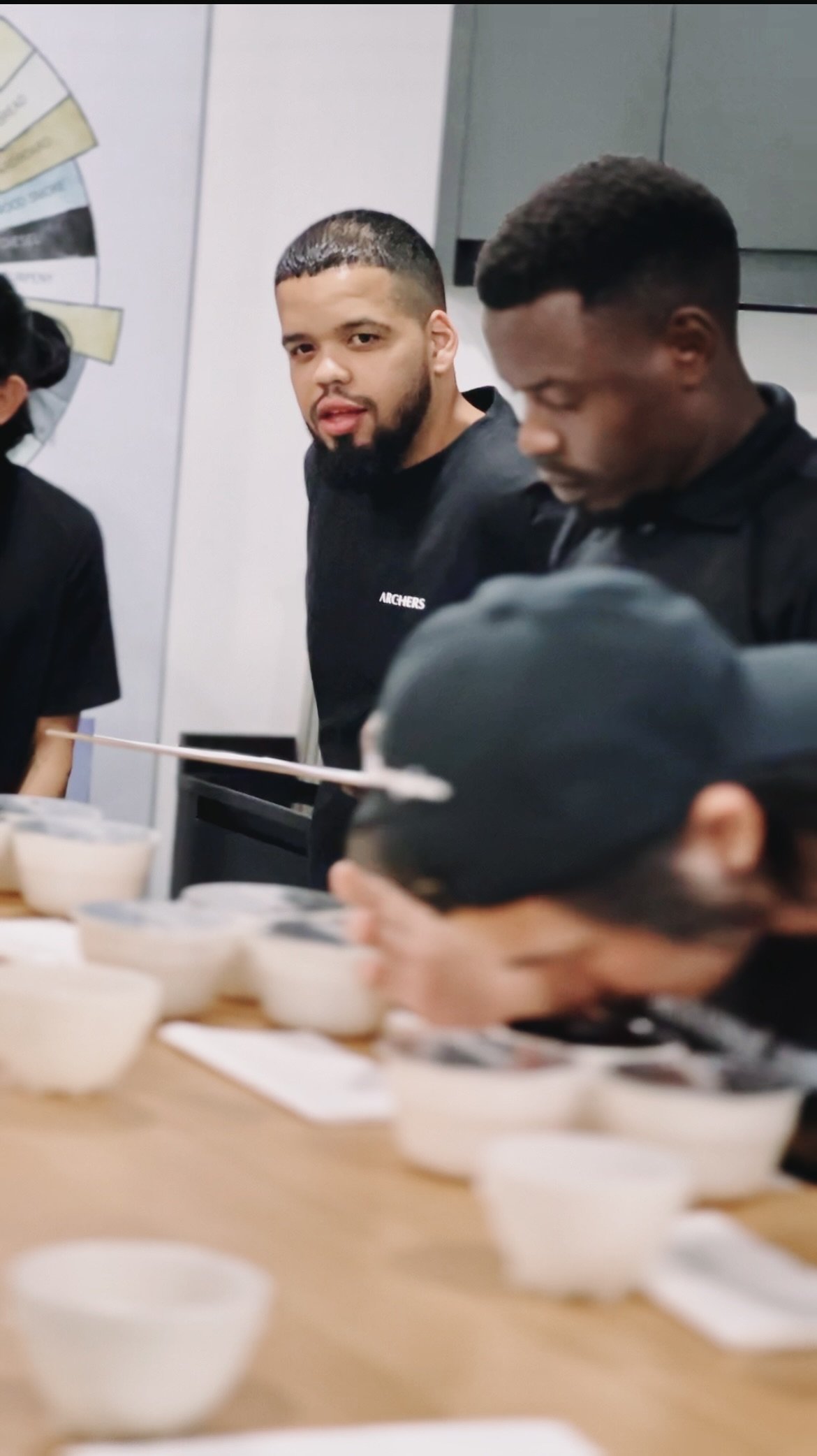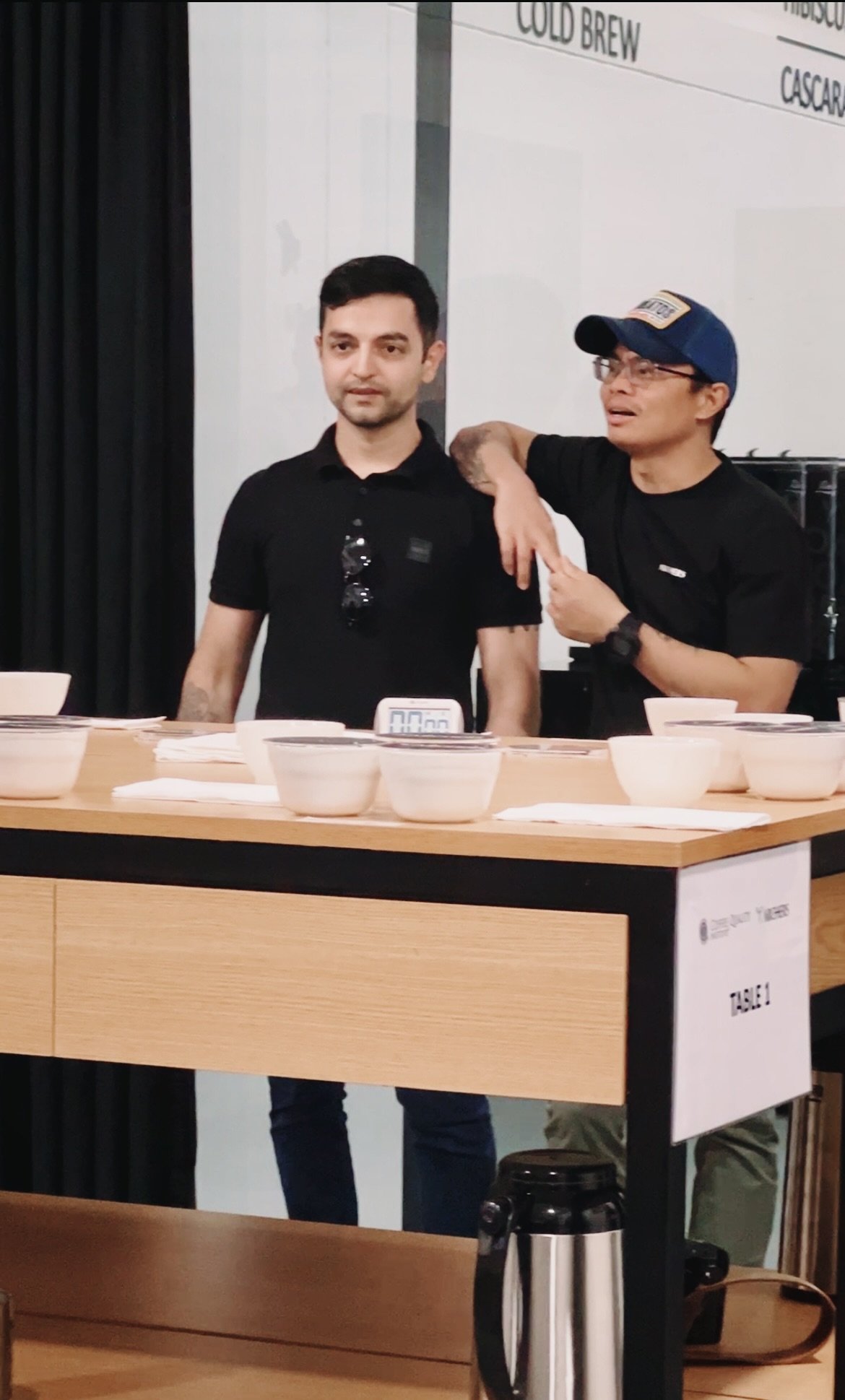Processing can make or break coffee
Imagine this: One origin. One farm. One coffee. Processed 20 different ways. This is exactly what coffee professionals implemented during their trip to Ethiopia earlier this year, a processing adventure at Daye Bensa’s Gatta Washing Station. My finding: CQI - Q Processing Level 2 Professional course is no joke.
I can’t even begin to fathom the kind of knowledge required to process coffee. Not the textbook kind but the kind you are certain the knowledge imparted to the producer puts them in less or more risk of their livelihoods.
When David Disuanco invited me and Andy Anderson (FLTR Magazine) to a private cupping of the same Ethiopian coffee processed 20 different ways at Archers Coffee earlier this month, I had to comprehend whether I would be a right fit for this gathering. I was always fascinated by the intricacies at farm level and I wasn’t letting go of this opportunity to dive deeper into the world of post-harvest processing.
Why process coffee?
The short answer: to separate the bean from the cherry’s fruit mucilage and skin. There are many processing techniques that can enhance the quality of coffee and play a big role in how it tastes. Resources, investment and time varies from process to process, hence choosing the right method is pivotal for a producer.
The CQI Q processing module together with Archers’ coffee masters — Frederick Bejo, Green Buyer and Head of Operations, and Dave Peralta, Head of Archers Academy, aim to inject in-depth understanding of processing, create standardized procedures to maintain consistency, and provide practical experience at the farm level.
Let’s say you have grown the finest and the most exotic coffee varietal there is, at the highest altitude in ideal growing conditions. You also have the most efficient pickers picking the ripest of red cherries, and after all the work you have put in, you employ the lousiest processing known to mankind. This ought to decrease the value of coffee faster than a stock market crash. Pun intended.
Choosing the right process for the right coffee
A preface is a short opening before the main narrative takes place, the cupping being the latter in our case. Dave and Fred ran a presentation doing just that, providing all of us with the backstory of the work done at the Gatta Washing Station, facts about coffee varietals, harvest season, and the right time to buy the coffee.
The presenters explained the composition of a coffee cherry followed by the ideal time to harvest, since this was key to understanding different types of coffee processing. Fundamentals on natural, honey and washed process with their respective challenges, benefits and steps were compellingly explained in a way that evoked both interest and attention in all of the participants.
I have to hand it to them for breaking down a very complex topic effortlessly, shows their mastery in specialty coffee. Before the actual cupping began, we got an insight into the 20 different types of processing that was carried out by the individuals. Some of them which I haven’t even heard of: submerged wet 48 hours, submerged bottled, yeast washed dry fermentation, and cool anaerobic. See what I mean?
I was fascinated by the speed at which the cupping was setup. Archers flexing their muscles and showing their finesse was a sight to behold. We were instructed to record our thoughts and scores while cupping the coffee on a scoresheet that was handed to us in the beginning of the session. Fred shared his findings and most importantly, his views if the said processing was necessary for that respective coffee sample.
A change in trend
With all this said, we know that the consumers ultimately dictate what kind of coffee processing a producer needs to do. It was also clear by the end of it that processing can make or break the coffee. It shouldn’t come as a surprise that we are based in a region where consumer taste preferences tilt towards fruit-forward higher-intensity topped-with-funk tasting coffee.
Washed and honey processed coffees are rare and often considered inferior to over-fermented coffees, but the truth is, those are the type of coffees that are not masked with overripe fruit and winey boozy notes, and are very clean and often display the characteristics of the origin.
I feel there is a change coming going forward. As the consumer palette become more experienced, there is a shift towards cleaner tasting coffee. It’s not just me saying this but Fred thinks the same.
Fred comments from his latest Instagram post, “We are trying to balance what the market likes and wants that is good for the business. Consumers are starting to appreciate cleaner coffees. Moving forward we are going to focus on buying more cleaner coffees.”
The Archers Coffee Academy is a CQI and SCA-certified campus. Their licensed instructors run a huge list of workshops and courses that are on-par with global standards. Check them out here.






